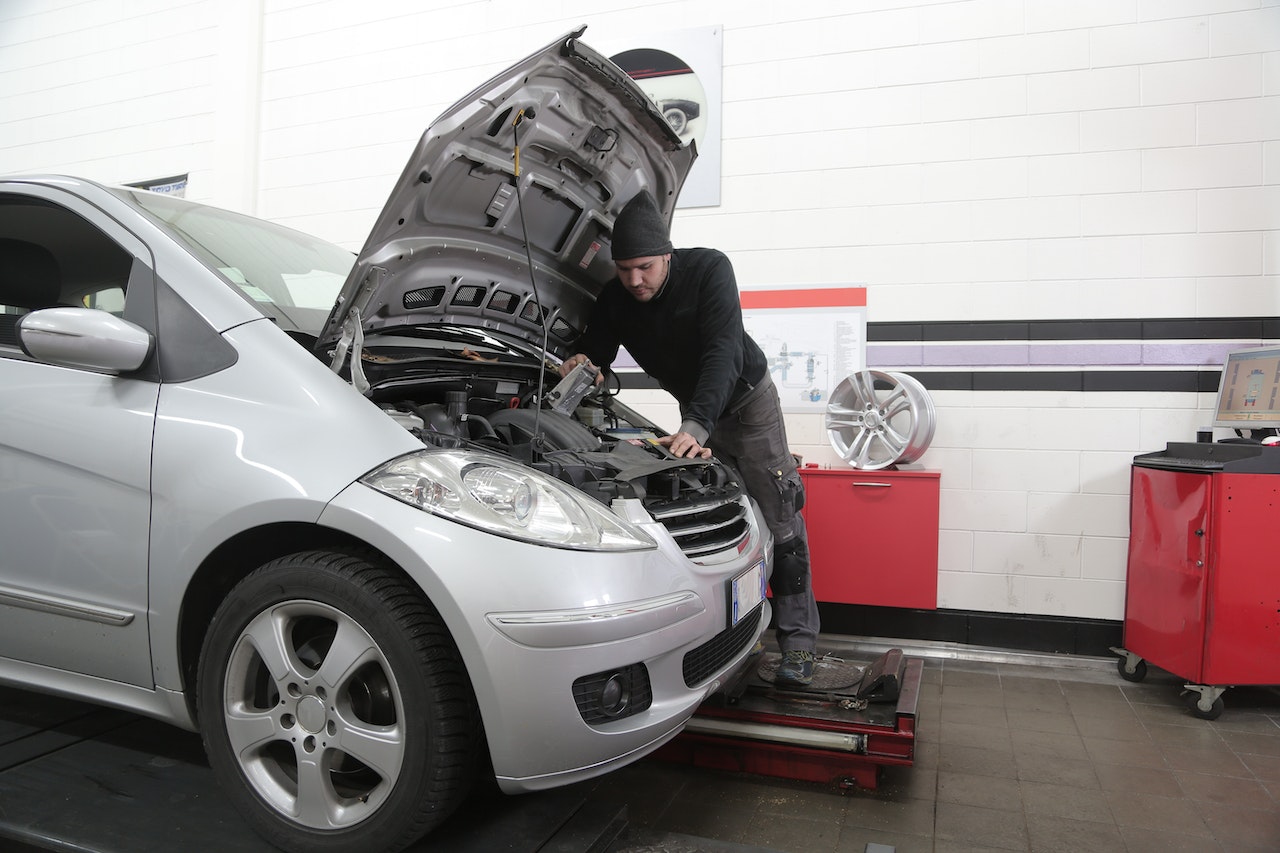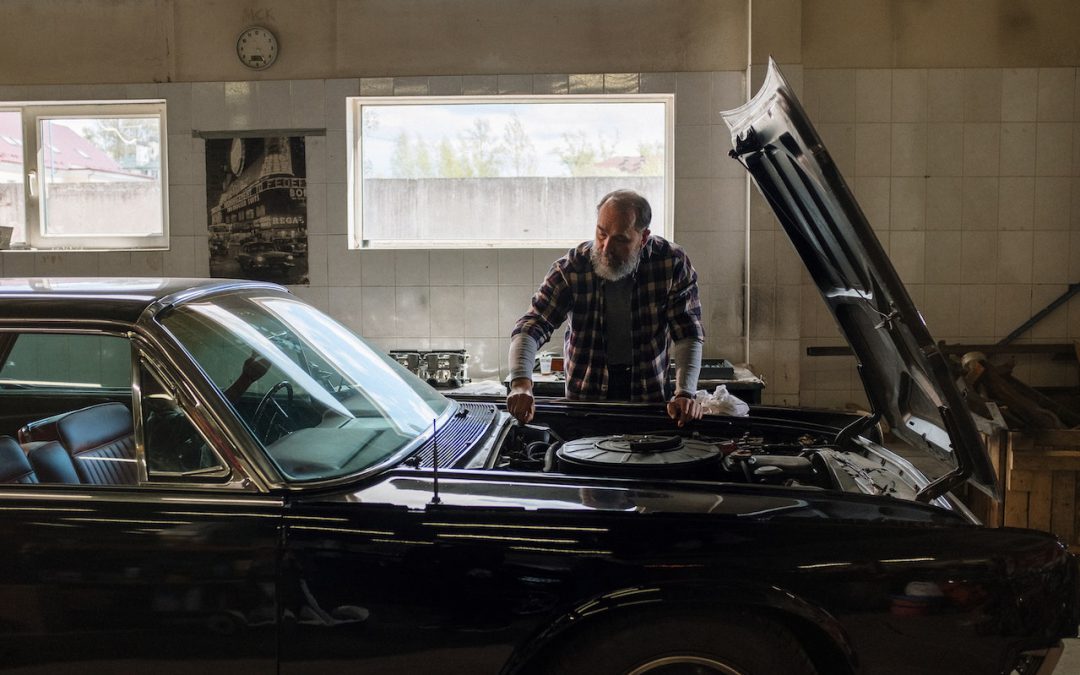If your radiator fan is not working, your first action should be to turn off your engine. This step is critical to cooling it down and avoiding any chance of overheating. Heat can develop very fast. Allowing time for hot components to cool down is beneficial for your engine and personal safety.
After that, test the fuse and the relay. They’re very noticeable and relatively simple to repair with common tools. Test both parts and examine them for any damage.
Second, check for frayed wires or debris around the fan that could be blocking its ability to turn. Identifying these early saves you time and money.
In this guide, I’ll show you how to do it step by step. I’ll go over what to look for and how to know when you need a new part or an easy repair.
Key Takeaways
- 2 Pull over as soon as it’s safe If your radiator fan fails… Shut down your engine immediately to avoid overheating and engine damage.
- Let your engine cool down completely before you open the hood or check the radiator area. Tip: Never remove the radiator cap while the engine is still hot.
- First step in your diagnostic process should be to check the temp gauge. Then check the connected circuitry with the fan running, listening for warning signals or concerning noises.
- Regularly check your coolant levels, keep the radiator area clean, and schedule routine cooling system inspections to avoid future fan problems.
- Identify symptoms that point toward electrical problems, a bad sensor, or worn-out fan parts. Make sure you keep a record of any recent service performed to allow for a proper diagnosis.
- If you cannot pinpoint or fix the issue yourself, seek help from a professional mechanic to protect your engine and ensure safe driving.
Why Your Radiator Fan Matters
Your radiator fan is one of the most important components in your car. It helps to draw air through the radiator, particularly when you’re idling in traffic or at a stop light. When this fan functions properly, it helps regulate engine temperature, preventing you from getting burned while driving.
Especially on hot days, a well-functioning fan is crucial in keeping your car from overheating. This means you can drive with peace of mind, even on the hottest days and in city stop-and-go traffic. When the fan stops doing its job, heat starts accumulating quickly. That’s when you are in the most danger.
It’s no surprise that overheating can warp engine parts, break seals, and even blow the head gasket—an absolute nightmare for anyone. If your radiator fan is broken, there’s a lot less air going through your radiator when you’re not cruising at highway speeds. This is especially important at prolonged idles, such as waiting in a drive-thru line or stop-and-go city traffic.
If you ever see your temp gauge start to climb, listen up! If you’re hearing weird sounds coming from underneath the hood, that’s a warning sign. Roughly one in ten cars on the road have a deficient fan, so it’s not that uncommon. Repairing this issue is not cheap either, running between $200-$500.
It’s an important job it’s doing, so it’s worth it to take a look at your radiator fan from time to time. Check for broken or loose blades, frayed wires, and for any dirt accumulating around the fan. Routine inspections prevent you from falling behind on larger issues and allow you to enjoy a reliable, well-performing vehicle for many miles.
Immediate Steps: Safety First
When your radiator fan fails, you can save money by saving on vehicle repair costs with safety first radiators. Second, make sure to safeguard your vehicle against all expected destruction. Since a broken fan can lead to your vehicle overheating in no time flat, swift steps are important.
It helps to know what steps to take right away, especially if you’re driving in the city or stuck in slow traffic. Taking deliberate action and sticking to a procedure keeps you and your power unit safe.
Here’s a quick list of what to do first:
- Pull over in a safe spot away from traffic.
- Turn on your hazard lights.
- Shut off the engine right away.
- Let the engine cool before opening the hood.
- Watch the temperature gauge for signs of overheating.
- Stay alert for hissing, leaks, or odd smells.
Pull Over Safely Now
You’re going to want a location that’s pretty far removed from traffic. Image via FSG Safe walking environments—escalating parking lots or wide transportation shoulders on level safe ground.
Hazard lights make it easier for other drivers to see you on the side of the road. Once you’re parked, you can begin to explore without the pressure to rush.
Turn Off Engine Immediately
Turning off the engine helps prevent excessive heat build-up. Always wait for the car to cool for several minutes before even considering touching anything underneath the hood.
For starters, having the ignition off is critical. Going without can expose you to all sorts of nasty electrical surprises. If you plan to inspect your vehicle later, now is the time to pick up some rubber gloves or a cleaning rag.
Let Engine Cool Down
Wait until the engine is cool before opening the hood! Direct contact on hot components can scorch your palm.
Look out for steam or leaking fluid, but do not go near if you notice any. Hot coolant can spray out and it can spew everywhere if you’re not cautious.
Avoid Opening Radiator Cap Hot
Do not attempt to open the radiator cap while the engine is hot. Pressure builds up inside, and popping it open too early can result in hot, pressurized fluid spraying everywhere.
Give it time to cool down and wipe with a clean cloth as an extra precaution.
Pinpointing the Fan Problem
When troubleshooting a failed radiator fan, first I look for definitive indicators of the failure. First, I analyze whether the fan is actually needed to prevent overheating. Outward, clear, and visible symptoms save precious time and money spent on diagnosis.
Secondly, I pay more attention to the engine temperature gauge. When it climbs more than usual or starts to jump around, that’s a pretty good sign there’s a problem with the cooling fan. I make a note of anything unusual that I see in a reading or behavior. This ensures I have accurate information to share with my mechanic in case something goes wrong.
Check Temperature Gauge Behavior
I cringe whenever I look at the temperature gauge while driving and sitting at a red light. An increasing or erratic needle movement can indicate the fan is not cooling properly. I document all of these changes and get a sense of how they fit into the norm for my particular automobile.
Perform Visual Inspection First
Then, I open the hood and inspect the fan and surrounding components. I always check for visible cracks, bent blades or even leaves and debris lodged in the fan. I look to ensure the wiring harness and plugs are tight and not corroded.
Listen for Fan Activation
With the key in the on position, I wait for the faint hum or whir from the fan. The fan must come on at higher temperatures but not stay on continuously. Unusual noises such as squeaks or clicking may indicate a faulty fan bearing or motor.
Inspect Fuses and Relays
The electrical issues are more challenging… I go to the fuse box and look for blown fuses and replace them when required. I further test the relay by swapping it out with a known good relay.
Examine Wiring Connections Carefully
I inspect the wires for signs of wear or breakage. I like to use a voltmeter to verify power, or jumper wires from the battery to bench test the fan.
Test Fan Motor Directly
Then, I connect two jumper wires from the battery to the fan’s harness. When the fan whips up fast, you know the motor is still functional. If it is not running under a heavy load, the motor should be replaced.
Check Coolant Temperature Sensor
I check the sensor’s plug, visually and by checking its resistance with a meter. If your readings are incorrect, it’s possible that a replacement sensor could resolve the issue.
Differentiate Motor vs. Control Issues
First, I make sure the fan is running with an ohmmeter, then I start checking relays or sensors. This lets me understand if the issue is in the motor or beyond.
Consider Recent Maintenance Impact
It raises broader questions whenever I think about any recent work. Occasionally, a loose plug or skipped step during maintenance can cause the fan to shut down.
Note Ambient Temperature Effects
I keep tabs on how drastically hot or cold weather affects the fan, to make note of what it’s doing. Hot weather is better for pushing the fan to operate at full capacity and expose underlying issues much more quickly.
Common Fan Failure Culprits
When a radiator fan fails, there are some common culprits that come to the forefront. You may notice the engine beginning to overheat, especially at idle or in stop-and-go traffic. That’s a good warning sign to inspect the system now before the failure escalates.
There are often three surprising culprits behind common fan failures. With a little foresight into where failure is most likely to occur, you can save yourself both time and money.
Electrical System Glitches
Electrical issues are another major cause of fan failure. Occasionally, a blown fuse or OEM relay prevents power from getting to the fan. You might see discolored wiring that appears charred or burned.
These types of problems can make the fan run intermittently or stop running entirely. If you are still apprehensive about inspecting the wiring or using a test light, that’s okay. Asking a shop to do a complete test first is “the smartest thing you can do,” Harris said.
Mechanical Obstructions or Damage
Damage to physical objects can cause a fan to cease operating as well. A wayward stone or piece of packing material can get wedged in the fan blades. Dirt, leaves, and regular debris accumulate and restrict air flow.
Fan clutches can wear out and cease to grab properly. As soon as you notice cracks or loss of blades, replace them. Providing adequate space around the fan is extremely helpful.
Faulty Temperature Sensors
Finally, sensors inform the fan when to turn on or off. A faulty temperature sensor might not detect the proper heat level. This means the fan may not be operating when the engine requires it to be.
In addition, if you are getting strange readings or the fan never turns on, replace the sensor and record the repair.
Low Coolant Level Impact
If the coolant level is too low, this can prevent the main fan from operating efficiently. Make sure you monitor the coolant level between “min” and “max” on the outside of the tank.
Replenish it if necessary and check for leaks, such as underneath the vehicle after it’s been parked for a while. Low coolant could just be a bigger leak or issue.
Fan Motor or Clutch Wear
Over time, motors and clutches wear out. If they begin to fail, they can easily blow fuses or go out of their way to draw more power.
Replacing common failure parts prevents damage and keeps the fan functioning properly.
Model-Specific Weak Points
Every model car has its specific big problems. On some models, the relay or fan motor is known to be under-built.
What to watch for and advice on maintenance will all be included in your manual. When listed, big repairs might start at $200 – $500 which could be a big deal or maybe it’s just a little part that’s gone bad.

Driving Without a Fan? Risky!
If the fan has failed, the engine will begin to overheat quickly. In older vehicles, the cooling motor can overheat in a hurry. In fact, with the windows up, it can get lethal levels in as little as 15 to 20 minutes.
Modern cars can’t survive without a mini intelligence agency of sensors to detect this increase in temperature on all vehicles. When that ominous warning light comes on or the code activates on your dashboard, this allows you to get out in front of potential problems before they turn into big excuses. If any of these are true, the danger is genuine.
The extreme heat can cause warping of different components like the head gasket, break seals, or cracking of the engine block. One thing’s for sure, these repairs can seriously empty your bank account. They end up cornering you when your car is your only way to get to work or perform your daily activities.
Driving a car without a fan in extreme temperatures is not only a gamble on your pocketbook. It’s not just a comfort problem; it can be a serious safety concern as well. Overheated engines can stall, lose power, or subsequently die on busy urban interstates.
So it’s common sense to put fan repair at the top of your to-do list. Repairing or replacing a radiator fan is not a time-consuming task for an expert. Shockingly, most mechanics require maybe two or three hours at most to complete this work.
Plus, you’ll enjoy the peace of mind that comes from knowing the fix is quick, easy—and keeps you safe on the road. Driving with your heater fan broken can lead to serious engine damage. While not all of these engines are going to fail tomorrow, the risk certainly exists.
Then it only makes sense to treat it like a treatment-fix-it. Tackle this one ahead of time, or risk incurring expensive fees. You’ll be keeping your drive as enjoyable and safe as possible!
Keep Your Fan Healthy
A radiator fan is one of the most essential components to your engine cooling system. To keep it healthy, mini-moves performed on a frequent maintenance calendar go a long way. Taking these steps minimizes the likelihood of a breakdown and ensures that your vehicle continues to operate reliably day in and day out.
Caring for your fan is simple and straightforward! It only takes maintenance, good practices and paying attention to a handful of vital components.
Schedule Regular Cooling Checks
As a precaution, I made it part of my regular inspection routine to check the cooling system, especially the radiator fan. I am looking at the health of the fan blades, the motor, and the electrical plugs at every oil change for any signs of wear and tear.
If I see any damaged wires, cracked plugs or their tightness, I immediately repair or replace them. I just maintain a simple log with dates and short notes on observations.
When I can’t do it all on my own, I plan a visit with a trusted shop. They understand what it takes to avoid the most frequent cause of fan failure, which is usually electrical—90% of failures!
Keep Radiator Area Clean
Keeping your radiator area clear of debris ensures good airflow and prevents your fan from overworking. I scrape leaves, oil and dirt off both the fan and radiator.
I have found the best way to maintain my fins is just to keep them clean and clear; a soft brush works best. Regularly checking the fan blades for dust and cleaning them goes a long way.
Clean blades, plugs and wires prevent shorts or bad connections.
Maintain Proper Coolant Levels
I monitor the coolant level religiously, refilling whenever necessary. Heck, even the earliest indication of a leak has me jumping and gunning.
Keeping my fans healthy is crucial. The proper mix of coolant not only protects my engine, it allows the fan to function properly. The number one thing I try to do is document every coolant change; that way it doesn’t get overlooked.
Watch Your Temperature Gauge
When I’m driving around with my fan, I pay close attention to the temperature gauge. I want to be in tune with what is normal for my car, so if it starts running hot, I can respond right away.
All suggestions are placed into my action log for my next inspection cycle.
When DIY Isn’t Enough
At first glance, some radiator fan problems can appear direct. They frequently need more than just a bandage. When the fan still does not run after you check the fuse box and change a relay, the next steps often call for gear that most folks do not have at home.
In nearly 80% of cases, the underlying culprit turns out to be the thermostat – or the entire cooling system. These components require a fine touch, and that’s where a master technician can work his magic. A professional can easily test the coolant temperature sensor (CTS) and identify whether it is functioning or failing.
If the relay swap isn’t doing the trick, then things are a bit more serious. These repairs often add up to $200-500 or more. Putting money into them will pay off by protecting your car and helping it operate more efficiently.
When you’re attempting things yourself, it’s helpful to keep a list of everything you’ve tried. Take that wishlist to your local mechanic. This reduces time spent and provides the shop with a definitive starting point. It demonstrates clearly what you attempted and guides them into understanding what the next step is.
Speaking of safety, that’s important, too. When you work around the engine, used or unused, sharp edges and hot surfaces can cause injury. Adjust and escalate appropriately. If the proposed fix comes across as too large in function or scope, or too risky, then hand it off to a trained specialist.
In industry, there are tools for every job, and the mechanics know how to diagnose when the fan goes kaput. Knowing you have quality at a good shop reduces stress, keeps your car on the road longer, saves money and frustration in the process.
Conclusion
Just like any other car component, every car demonstrates symptoms before the fan finally stops working. A cursory visual inspection of the relevant fuses, wires, and relays usually identifies the issue. Hearing weird noises or smelling hot radiator fumes up front prevents you from having a major nightmare down the road. I’ll certainly be keeping a closer watch on my fan now and testing it every time I open the hood! That habit takes minutes and keeps my ride from overheating in stop-and-go traffic or on all-day highway travel. When you identify a little stumble, it only takes a few easy steps to prevent a little problem from evolving into a major repair. Looking for a more enjoyable ride and increased peace of mind? Stay sharp, stay on top of inspections, and reach out to a professional if you’re in over your head. Your radiator fan—and your bank account—will thank you.
Frequently Asked Questions
1. What should you do first if your radiator fan stops working?
The first thing you want to do is turn off your engine. This stops your engine from overheating, which can lead to catastrophic engine damage. Always allow your vehicle to cool down all the way before inspecting or touching any components.
2. Is it safe to drive with a faulty radiator fan?
No, driving with a bad fan will cause your engine to overheat very rapidly, especially in stop and go traffic or high temperatures. This could result in costly repairs or even catastrophic engine collapse.
3. How can you tell if your radiator fan is failing?
Watch for unusual smells. Listen for loud, strange noises. Observe whether the fan activates as the engine is warming up and monitor excessive climb of temperature gauges. If the fan refuses to turn on, that’s a clear sign something is wrong.
4. What are the most common reasons a radiator fan fails?
Some common culprits are a blown fuse, bad relay, faulty wiring or a broken fan motor. Other times, they’re caused by failed temperature sensors or coolant loss.
5. Can you fix a radiator fan yourself?
If that’s the case, particularly if it’s a blown fuse or relay, you will often be able to replace this yourself. If you suspect wiring or motor issues, basic tools and a repair manual may be all you need to effect a repair. For more complicated issues, visit a mechanic.
6. How do you prevent radiator fan problems?
Prevent future issues by regularly monitoring coolant levels and making sure all wiring is in good condition. Remove debris from the fan area and replace worn components as soon as possible. Performing regular maintenance prevents expensive repairs without guarantees, let alone the money.
7. When should you call a professional for radiator fan issues?
If you’ve diagnosed blown fuses, bad relays, and faulty wiring on your own but the radiator fan remains inoperative, contact a mobile mechanic you can trust. Having a professional diagnose your issue will help you keep your engine safe.
Are You Looking for Expertise with a Broken Radiator Fan?
Experience the excellence of autoTECH Blackhawk when it comes to resolving a broken radiator fan. Why trust us with your cooling‑system repair? Our standout feature is an unwavering dedication to building strong relationships with our clients—an essential element when your vehicle’s temperature regulation is at stake. This commitment forms the cornerstone of our tailored approach, ensuring every solution aligns with your specific goals for performance, efficiency, and long‑term engine health.
Whether you’re battling overheating, hearing odd fan noises, noticing the A/C struggling at idle, or simply seeking expert guidance on keeping your cooling system in peak condition, autoTECH Blackhawk is here to exceed your expectations. We proudly back every repair with an industry‑leading 3‑year / 36,000‑mile warranty and use only high‑quality, manufacturer‑recommended fans, relays, and sensors.
Don’t wait until a faulty fan leaves you stranded—contact our friendly team today to schedule a convenient, contactless consultation for your radiator‑fan repair needs!


